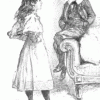
Claudia Nelson, “Mass Media Meets Children’s Literature, 1899: E. Nesbit’s The Story of the Treasure Seekers“
Looking both backward and forward, E. Nesbit’s The Story of the Treasure Seekers stands at the intersection of Victorianism and modernism. The novel crosses borders in another sense as well: in its handling of references to advertising, newspapers, and iconic historical events, it highlights the extent to which fact and fiction, reportage and mythmaking, alike depend upon artifice. The publication of Nesbit’s breakthrough work, which foregrounds the importance of mass culture to middle-class children’s imaginations, marks a historical change in perceptions of children’s relationship to consumerism.
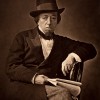
Dianne F. Sadoff, “The Silver Fork Novel, 1824-41”
Between 1824, when Theodore Hook’s sketches, Sayings and Doings, were published as a volume, and 1841, when Catherine Gore’s Cecil, a Peer, appeared, the silver fork novel was among the most popular fictional modes. This sub-genre rewrote Jane Austen’s narratives for a more exclusive class and a new, reform-minded middling reader with class aspirations, thus preparing for the mid-century emergence of William Makepeace Thackeray’s and Charles Dickens’s novels.
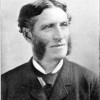
Annmarie Drury, “‘To a Gipsy Child by the Sea-Shore’ (1849) and Matthew Arnold’s Poetic Questions”
In 1843 or 1844, Matthew Arnold saw a mother and child on a pier in Douglas, Isle of Man. This sighting connects to “To a Gipsy Child by the Sea-Shore,” which appeared in 1849 in his first poetic collection, The Strayed Reveller, and Other Poems, where it is identified in the volume’s contents page under a slightly different title, “Stanzas on a Gipsy Child by the Sea-Shore, Douglas, Isle of Man.” This essay explores the poem from the perspective of lyric craft, beginning with its rhetorical strangeness and focusing on the young Arnold’s poetic experimentation. “Gipsy Child” is a lyric assay. It acknowledges Romantic antecedents while definitively diverging from them, particularly in how it deploys questions to transform the rhetorical identity of its speaker. Ultimately, the young Arnold asserts poetic authority through questioning – a gesture we can relate to the high value that Arnold later places on dialogue in other aspects of his work, as cultural critic and as inspector of schools. In terms of experience and representation, the rhetorical transformation in “Gipsy Child” raises questions about the relationship between real-world events and poetic fashioning.
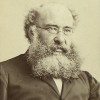
Deborah Denenholz Morse, “The Way He Thought Then: Modernity and the Retreat of the Public Liberal in Anthony Trollope’s The Way We Live Now, 1873”
Anthony Trollope’s The Way We Live Now represents the culture of pervasive dishonesty and greed he saw everywhere around him in High Victorian England. The novel has come to be understood as a text about the unfamiliar problems of modernity, of the title’s “now.” In 1873, Trollope responds to the cultural moment by briefly retreating from his liberal reformist stance to a belief only in private commitment between individuals. The novel marks a caesura in Trollope’s faith that the public domain could reform.

Eleanor Courtemanche, “On the Publication of Fabian Essays in Socialism, December 1889″
The Fabian Essays, published in 1889 by an intellectual London club called the Fabian Society, aimed to make socialism palatable to a largely suspicious British public and became a surprise bestseller. The volume was edited by George Bernard Shaw, who was a leading figure in the Fabian Society before his career as a dramatist. In the Fabian Essays, the Fabians distanced themselves from the insurrectionary radicalism of both Hyndman’s Social Democratic Federation and Morris’s Socialist League, claiming instead that Britain was inevitably and gradually evolving into a sensible socialist state. The Fabians’ advocacy of pragmatic socialist parliamentary politics helped pave the way for the rise of the Labour Party in 1900.
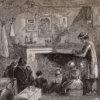
Barbara Leckie, “Prince Albert’s Exhibition Model Dwellings”
This paper discusses Prince Albert’s Exhibition Model Dwellings built just off the grounds of the Great Exhibition in 1851. These model dwellings, designed by the architect Henry Roberts, contributed to growing efforts to place the mid-century crisis in housing of the poor at the forefront of public attention. They also made vivid the intersection of print culture and the built environment in three ways. First, they were a response to decades of print exposés of existing housing of the poor. Second, Roberts wrote a pamphlet, a how-to guide of sorts, on the Exhibition Model Dwellings as well as a book on model dwellings in general, The Dwellings of the Labouring Classes, that went into four editions. Finally, the Exhibition Model Dwellings were the topic of many contemporary print commentaries. These latter print commentaries will be the focus of this article. I want both to return the Exhibition Model Dwellings to the prominence they carried in the mid-Victorian period and to explore their contribution to the period’s conflicted response to the crisis in existing housing of the poor with respect to transparency, health, subject formation, and national identity.
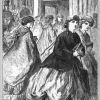
Richard Menke, “The End of the Three-Volume Novel System, 27 June 1894”
In 1894, the great private circulating libraries announced that they were changing their terms for purchasing fiction, ultimately leading publishers to abandon the long-standard three-volume format for novels. This essay considers the three-volume novel system as part of an information empire and examines the collapse of that system both through the work of book historians and through the writing of Oscar Wilde, George Gissing, Ella Hepworth Dixon, Rudyard Kipling, and other writers of the 1890s.
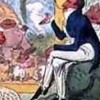
Timothy Johns, “The 1820 Settlement Scheme to South Africa”
The 1820 settlement scheme to South Africa marks an important conjuncture both for the colony’s internal development and for the rhetoric of immigration in the internal politics of Britain. Examining the rationale for the venture in light of the seminal historical event of the age—the Peterloo Massacre of 16 August 1819—and in light of Romantic notions of the “Noble Savage,” this entry attempts to demonstrate how concerns surrounding the South African scheme came to be entangled within larger debates over joblessness, slavery, class struggle, and inanition in early nineteenth-century British culture. Limiting its focus to a reading of The Emigrant’s Cabin (1822, 1834), a poem by the settler-poet Thomas Pringle (1789-1834), the entry argues that 1820 settler rhetoric navigated debates over labor through a novel engagement with time. By imagining a two-tiered system of labor time in the poem—one for settlers, based on unemployment relief and freedom from the oppressive pace of industrial life; and one for the African labor force on the eastern Cape farms, based on missionary discipline, a proto-Victorian program of “improvement,” and freedom from slavery—Pringle’s verse helped foster a British cultural identity in the Cape that resonates even today.

Anne Clendinning, “On The British Empire Exhibition, 1924-25”
The British Empire Exhibition, held in 1924 and 1925, assembled the member nations of the empire to develop imperial trade connections and to cultivate closer political ties between Britain and her territories. A commercial, educational and imperial spectacle, the exhibition reminded Britons of the material and political value of the empire, as the nation struggled to recover from the economic impact of the Great War. For some colonial participants, however, the British Empire Exhibition enabled them to present a distinct national identity in pursuit of greater autonomy from Britain, while for others, it provided a forum in which to critique racial discrimination within the empire.
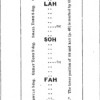
Phyllis Weliver, “On Tonic Sol-fa, January 1842”
In January 1842, John Curwen launched Tonic Sol-fa – a system for teaching people to sing, which he believed would improve individual and national morality. By the third quarter of the century, Tonic Sol-fa numbered hundreds of thousands of practitioners at home and in the colonies, and had outstripped competing sight-singing methods. This essay argues that Tonic Sol-fa promoted a way of managing behavior that worked alongside rational recreation and newly introduced institutional surveillance strategies.
